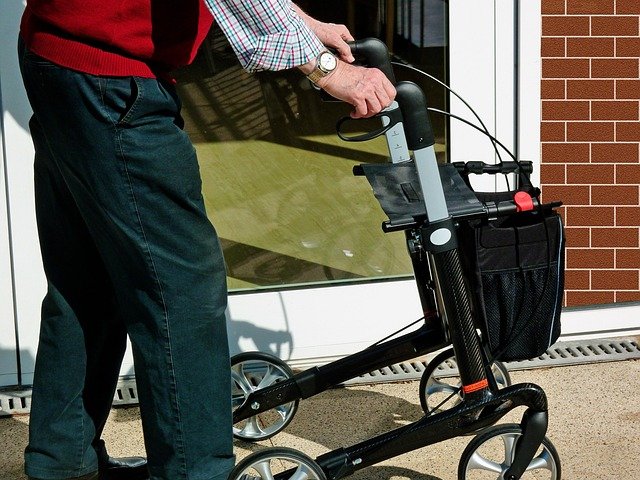How Mobility Aids Help Seniors Stay Active and Independent
Mobility aids such as walkers and rollators help older adults maintain balance and independence in daily activities. Learn how design improvements, comfort features, and accessibility solutions make movement easier while promoting confidence and safety.

As people age, maintaining independence while staying physically active becomes a delicate balance. Physical limitations, whether from arthritis, balance issues, or reduced strength, can gradually restrict daily activities and social participation. However, modern mobility aids have transformed how seniors approach these challenges, offering innovative solutions that restore confidence and enable continued engagement with life.
Understanding Different Mobility Aid Types
Mobility aids encompass a wide range of devices designed to support movement and stability. Traditional walking canes provide basic support for those with mild balance concerns or leg weakness. Four-wheeled walkers, also known as rollators, offer enhanced stability with added features like seats and storage compartments. For individuals requiring more substantial support, wheelchairs provide complete mobility solutions, while mobility scooters bridge the gap between walking aids and powered transportation.
Each type serves specific needs and mobility levels. Walking frames work well for short distances and indoor use, while mobility scooters excel at covering longer distances both indoors and outdoors. The choice depends on individual physical capabilities, lifestyle requirements, and environmental considerations.
Recent Walker Design Improvements
Walker technology has advanced significantly in recent years, incorporating user feedback and ergonomic research. Modern rollators feature lightweight aluminum frames that reduce the effort required to maneuver them. Improved braking systems provide better control, while ergonomic handles reduce hand and wrist strain during extended use.
Height-adjustable features ensure proper posture and reduce back strain. Many contemporary models include padded seats that fold down when needed, allowing users to rest during longer outings. Storage baskets and compartments have been redesigned for easier access, and some models even include cup holders and personal item organizers.
Wheel design has also evolved, with larger, more durable wheels that navigate various terrains more effectively. Anti-tip features and improved weight distribution enhance safety, while quick-folding mechanisms make storage and transport more convenient.
Comfortable Daily Movement Solutions
Comfort plays a crucial role in encouraging regular use of mobility aids. Padded handles, adjustable armrests, and cushioned seats reduce pressure points and fatigue. Breathable materials prevent excessive sweating during warm weather, while weather-resistant components ensure reliable performance in various conditions.
Suspension systems in mobility scooters provide smoother rides over uneven surfaces. Swivel seats make getting on and off easier, while adjustable steering columns accommodate different body types. Battery technology improvements have extended range and reduced charging times, making devices more practical for daily use.
Indoor maneuverability has been enhanced through compact designs and improved turning radii. Many devices now feature removable components for easier cleaning and maintenance, contributing to long-term hygiene and functionality.
Cost Considerations and Provider Comparison
Understanding the financial aspects of mobility aids helps in making informed decisions. Basic walking canes typically cost between $15-50, while standard rollators range from $75-300. Mobility scooters represent a larger investment, with prices varying significantly based on features and capabilities.
| Device Type | Provider Examples | Cost Estimation |
|---|---|---|
| Basic Rollator | Drive Medical, Medline | $100-250 |
| Premium Walker | Hugo Mobility, NOVA Medical | $200-400 |
| Portable Scooter | Pride Mobility, Golden Technologies | $800-2,500 |
| Heavy-duty Scooter | Invacare, Hoveround | $1,500-4,000 |
Prices, rates, or cost estimates mentioned in this article are based on the latest available information but may change over time. Independent research is advised before making financial decisions.
Insurance coverage varies significantly, with Medicare potentially covering certain medically necessary devices when prescribed by healthcare providers. Private insurance plans may offer additional coverage options. Many providers offer rental programs for temporary needs or trial periods before purchase.
Impact on Social Engagement and Mental Health
Mobility aids significantly influence psychological well-being by reducing isolation and enabling continued social participation. When seniors can confidently navigate community spaces, they maintain connections with friends, family, and social groups. This continued engagement supports cognitive health and emotional stability.
The ability to perform routine activities independently, such as grocery shopping or attending religious services, preserves dignity and self-esteem. Many users report increased confidence in public spaces and reduced anxiety about falling or becoming stranded.
Participation in recreational activities becomes possible again with appropriate mobility support. Whether visiting museums, attending sporting events, or enjoying outdoor festivals, mobility aids open doors to experiences that might otherwise become inaccessible.
Safety Features and Training Considerations
Modern mobility aids incorporate numerous safety features designed to prevent accidents and injuries. Anti-tip wheels, reflective materials for visibility, and horn or bell systems enhance user safety. LED lighting systems improve visibility during evening use, while automatic braking systems prevent runaway situations on inclines.
Proper training ensures safe and effective use of mobility devices. Many healthcare providers and equipment suppliers offer instruction sessions covering basic operation, maintenance, and safety protocols. Understanding weight limits, battery care for powered devices, and proper storage techniques extends device lifespan and maintains safety standards.
Regular maintenance schedules help identify potential issues before they become safety hazards. Tire pressure checks, brake adjustments, and battery maintenance are essential for reliable performance.
Mobility aids represent powerful tools for maintaining independence and active lifestyles as physical capabilities change with age. By understanding available options, associated costs, and proper usage techniques, seniors can make informed decisions that support their long-term mobility goals and quality of life. The key lies in matching individual needs with appropriate technology while ensuring proper training and ongoing support.
This article is for informational purposes only and should not be considered medical advice. Please consult a qualified healthcare professional for personalized guidance and treatment.




